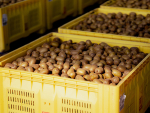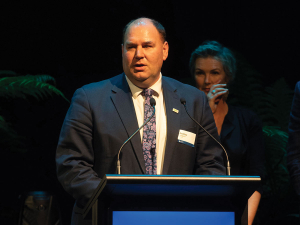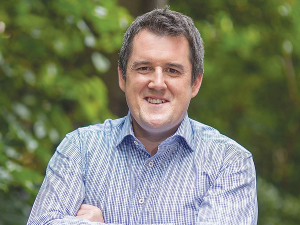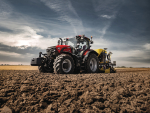The response to the new red variety of kiwifruit has been exceptional, says Zespri chief executive Dan Mathieson.
He told Hort News the hugely positive consumer reaction to the red kiwifruit, which Zespri has trialled for the last few years, appears to be driven by the beautiful, vibrant colour of the red and by its very sweet flavour.
“We did a trial marketing campaign with it in Singapore and were sold out within a couple of weeks. We also put 30,000 trays on the NZ market and that also went very well with a great response to the taste and colour,” Mathieson says.
“It is quite different when you see the red colour and that has driven a greater level of interest than we have seen for some time.”
While the red variety has huge potential, Mathieson says a couple of challenges remain. These relate to the shorter storage life of the fruit and its tendency to ripen faster than other varieties of kiwifruit.
However, Zespri hopes these challenges can be overcome. The company is busy analysing the data with a view to deciding whether to commercialise the red variety later this year.
When the red variety was first revealed it was thought that it would mainly interest the Asian market where red is a popular colour. But if the storage issue can be overcome, Mathieson predicts kiwi red will also be a hit in the lucrative European market.
“I think historically we thought green did better in Europe than SunGold, but European consumers have got used to SunGold and we are seeing greater demand for this than for green.
“I think it will be the same for red because there are many consumers looking for a very sweet variety and I think the red flavour will answer that need.”
Mathieson says they are also developing a new sweeter green variety, which he claims is more ‘ready to eat’. A problem with green kiwifruit is the time it takes to ripen after consumer purchase.
“Our consumers have been telling us for a long time they want ready-to-eat kiwifruit. They love the health and nutrition, but they want it in the most convenient format possible, so it should be ready to eat when they buy it from the supermarket shelves. This is one reason why gold has done so well.”
Smaller, better tasting
Consumers will notice two differences in this year’s kiwifruit crop and it’s due to the dry climate conditions of the past season.
Firstly, the kiwifruit will be smaller in size, but compensating for that is the exceptional taste, Mathieson says.
“Certainly, in my 17 years in the company, this is the record taste result we have seen and in the market we have seen strong repeat purchasing,” he told Hort News.
“People are buying the fruit, taking it home, loving it and coming back quickly to buy more and that is generating very strong repeat purchases.”
Mathieson says a challenge Zespri faces is ensuring that consumers can see the value of a better tasting kiwifruit offsetting the smaller size of the product.











